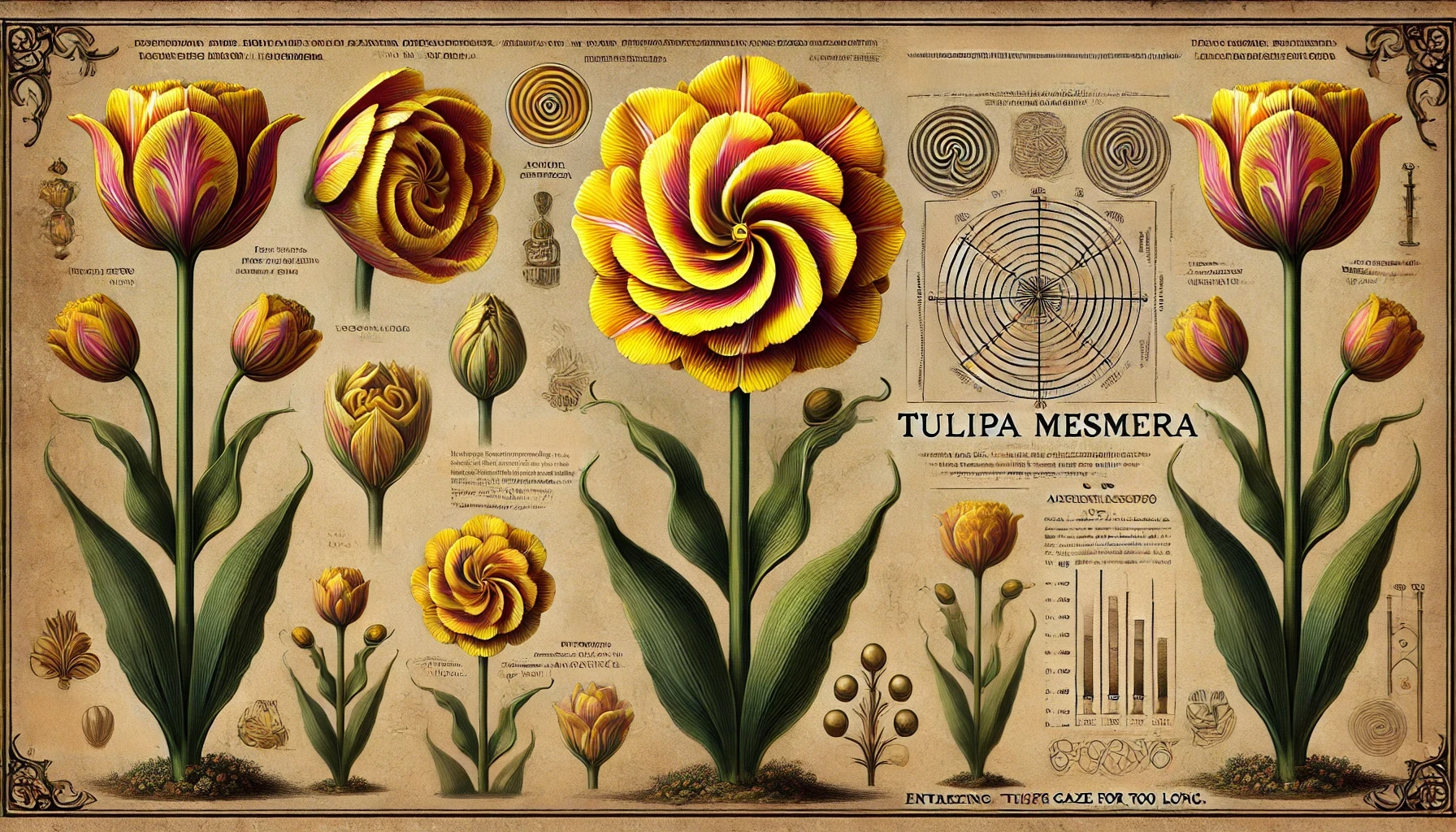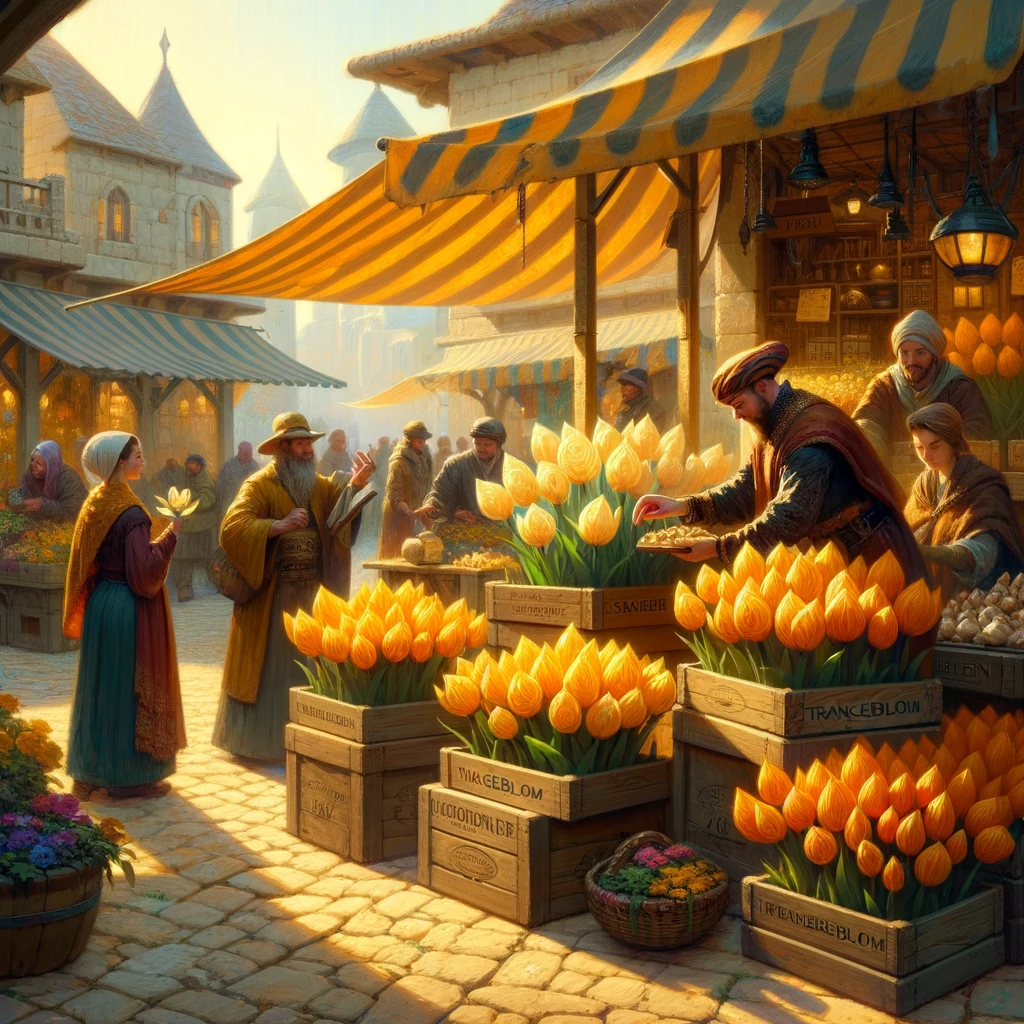Visual Description
The Trancebloom Tulip is a tall, striking flower known for its vivid yellow petals that twist into spiraling patterns. Under full sunlight, these spirals appear to rotate, creating an optical illusion that grows increasingly hypnotic the longer one stares. At the center of the bloom lies a deep, dark swirl, pulling the eye inward like a drain into thought.
Each bloom spans nearly eight inches across, standing on a smooth stem that can reach two feet in height. When planted in clusters—as they often are in the wild—their collective display is said to be dizzying, even from a distance.
Habitat and Growth
Native to sunlit grasslands and dry savannas, the Trancebloom prefers areas of unbroken sunlight and light, sandy soil. It grows in small colonies, often sprouting in elegant rings or arcs. These patches form natural illusions of motion, disorienting those who wander too close without realizing the flowers are the source.
Reproduction is facilitated by its sweet, mildly hallucinogenic nectar, which causes pollinators to return repeatedly, favoring the tulip above all other surrounding flora.
Alchemical Use and Preparation
The tulip’s nectar is carefully extracted at midday, when the spiraling patterns are most vibrant and the nectar most concentrated. The raw nectar is too potent for direct consumption—instead, it is infused into elixirs, where it acts as a thought-guiding agent.
Those who ingest a properly prepared infusion report experiencing a gentle realignment of focus. The effect is subtle: conversations seem more persuasive, choices feel more obvious, and hesitation fades. It is often described as “hearing someone’s argument inside your own voice.”
Because of the nectar’s sensitivity to light, it must be stored in semi-lit conditions, mimicking the dappled exposure of its native habitat.
Warnings and Curiosities
Unrefined nectar—if consumed directly—can trigger prolonged trances, during which the individual may become fixated on repetitive thoughts, actions, or environmental details. Cases have been recorded of travelers circling flower clusters for hours without realizing they were walking in loops.
Even the patterns alone are not without risk: staring into the bloom’s swirl for too long can lead to nausea, disorientation, or emotional vulnerability.
Trancebloom is commonly mistaken for the Sunflare Tulip, which shares its coloration but lacks the swirling pattern and potent nectar.
Historical Notes and Folklore
Tranceblooms feature heavily in folk stories of wandering spirits and lost travelers, often portrayed as natural traps for the unwary. In older songs, they are referred to as "sunspirals," and are said to bloom where “the sun wishes to speak with the earth, but too few are listening.”
In some remote villages, it is tradition to mark Trancebloom patches with woven reed circles—not as warning, but as a reminder to show respect. “You do not pick the flower that listens,” the saying goes.
“I’ve seen a man walk into a patch of Tranceblooms and argue himself into agreement. With no one else present.”
— Raleth Korr, Ashroot Diaries
The Spiral Market
In many towns across the plains and savannas, Trancebloom tulip bulbs are a common sight at flower stalls and seasonal markets. The blossoms are admired for their radiant color and hypnotic swirls, often planted by those seeking nothing more than a beautiful garden or a talking piece for gatherings. Lesser bulbs, bred for appearance over potency, are openly traded and affordable to most.
But deeper in the trading halls, behind counters carved with curling motifs, a different class of bulb changes hands. These are the deep-cycle specimens—harvested at peak spiral maturity, carefully rotated across sunfields, and known for their stronger nectar yield. This stock is tightly regulated by the Merchant and Craftsman’s Guild, who hold near-exclusive control over its cultivation, certification, and export.
“For every ten who plant them for beauty, there’s one who wants to persuade a noble, a judge, or a lover.”— Marent Doss, Guild-certified broker



Comments